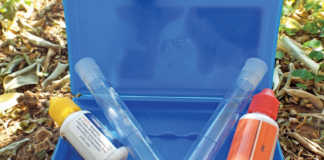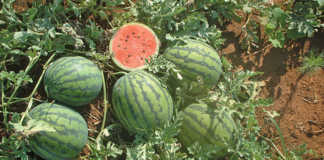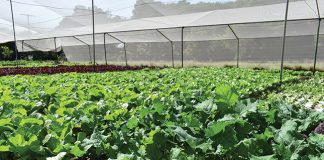Furrow irrigation makes use of furrows, or miniature trenches. Water flows along the furrows and wets the soil. The bottom and sides of the furrow absorb the water, which is then absorbed by the roots of the crop.This type of irrigation system must be carefully installed, as any change to the plans can affect its smooth operation. Constant maintenance, especially as far as the supply system is concerned, ensures good irrigation.
Functioning
Irrigation furrows are usually made using a tractor and implements, such as a shovel or hoe. The spacing between furrows varies, but is usually about 1m. The bottom ends of the furrows may be closed, but rainwater has to be drained off safely to avoid damage.
Layout
Furrows must have a uniform, moderate slope in the flow direction, and must slope slightly to allow water to flow down. If the furrows are straight, parallel to field edges, it’s even better. Contour ridges are seldom parallel to one another. But you can make the best of the situation by changing furrow lengths and slopes (gradients).
Management and maintenance
Broken furrow ridges are the same as leaking pipes and must be prevented or immediately repaired. Take care at the bottom ends to ensure safe drainage of excess rain and irrigation water. Crop characteristics Only row crops, such as tomatoes, cabbages, leafy vegetables, sugarcane and sweetcorn, are suited for furrow irrigation, as are crops where the leaves should not be wetted.
Crops are commonly planted along the side of the furrow, but in very dry areas they may be planted on the bottom and in wet areas on top of the ridges. Be sure to get information about the crop’s water needs and effective root depth.
Source: Irrigation Design Manual by the Agricultural Research Council Institute for Agricultural Engineering. For more information call the ARC-ILI on 012 842 4000.













